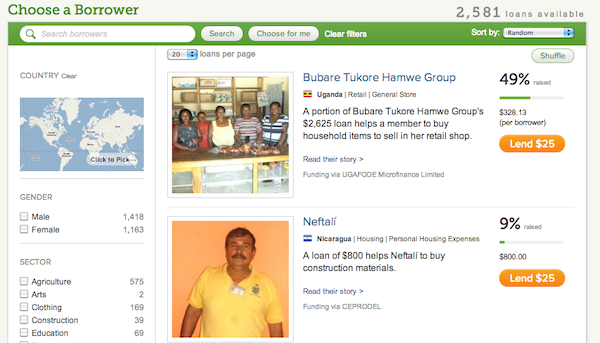Technology exists to solve problems.
Some solutions are to common problems like counting calories. Other solutions effect major change and improve lives worldwide.
Take Kiva, for example, a non-profit that facilitates microloans to people without access to traditional banking systems.
Folks who wish to make a loan can get online, find an entrpreneur in need, make a loan, get updates, and get paid back.
By combining the experience of doing something charitable with the reward of seeing an investment grow (and facilitating it through a simple web transaction) Kiva has generated almost $500 million in loans.
Earlier this year, Denver-based experience design agency Effective UI completed work on an online reporting platform that helps philanthropic organizations manage and present data.
Using the open-source platform Liferay, the team at Effective UI designed an application for Water for People that allows users to find information, data, metrics, and stories about the non-profit’s work ensuring that everyone in 30 districts around the world has reliable access to water and sanitation.
Making improvements to experiences in healthcare is challenging work, but it has the potential to impact numerous lives in profound ways. Case in point, Doug Dietz, a designer at General Electric Healthcare who wanted to make the experience of an MRI scan less frightening for children.
By decorating the imaging room and scanner, Dietz transformed a foreboding medical experience into an adventure. The doctor serves as a tour guide and the young patient gets a hero’s award at the end of the procedure, rounding an experience with real value to kids and their parents.
Technology has incredible potential to make a positive impact in people’s lives, whether on an individual level or by addressing societal or global concerns like hunger, security, peace, and the environment. The DfE Experience that Makes a Difference award recognizes digital products, systems, and other experience design initiatives that have contributed meaningful improvements to people’s lives.
If you’ve experienced products, services, or systems that make a difference, recommend them now! If you’ve been a part of a design project that has changed lives for the better, apply for this award.
[google_ad:WITHINARTICLE_1_468X60]
[google_ad:WITHINARTICLE_1_234X60_ALL]
Image of hands courtesy Shutterstock











